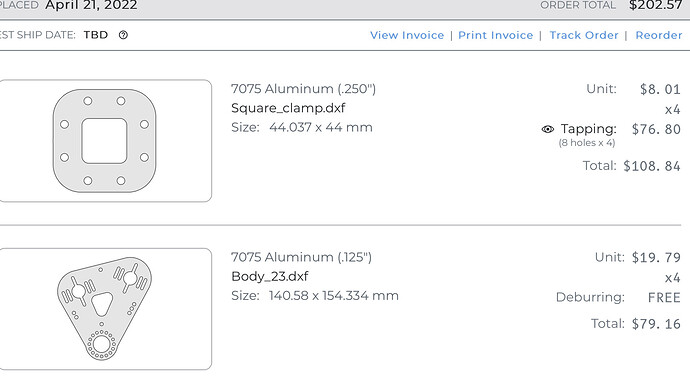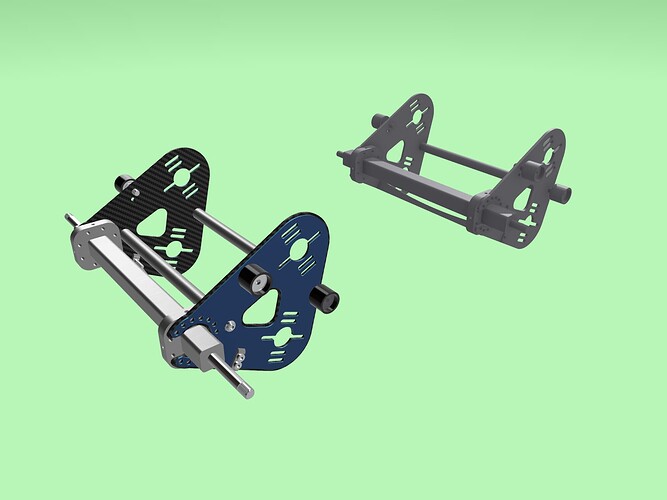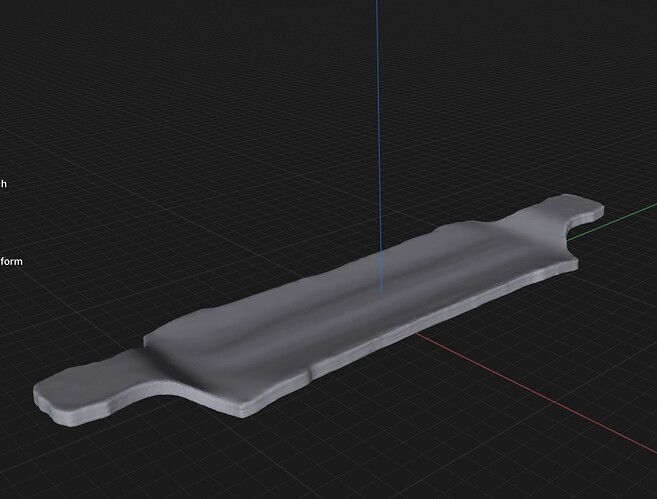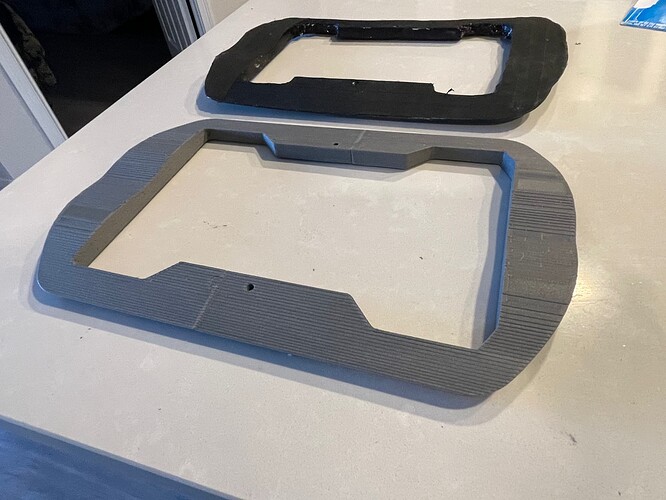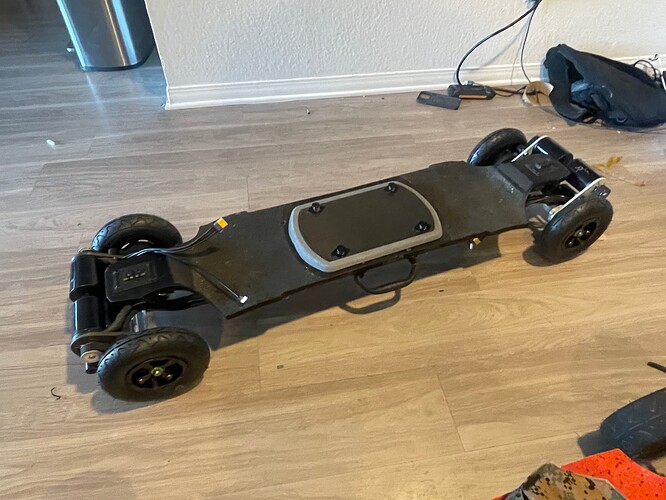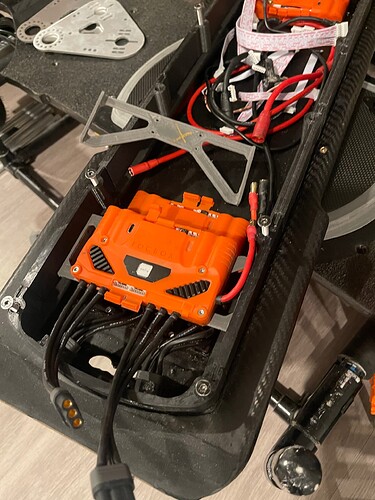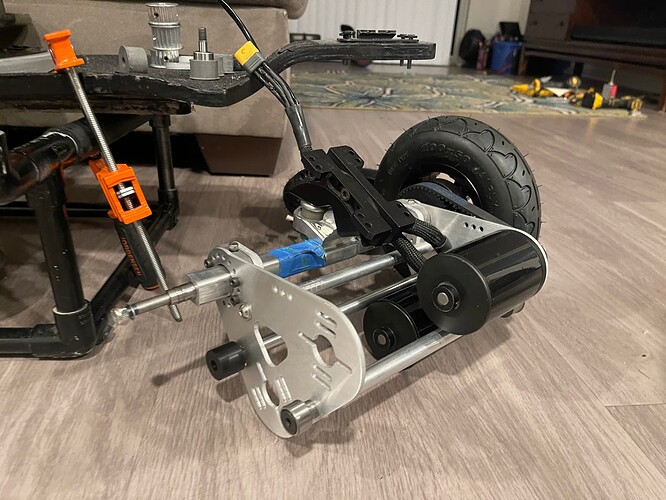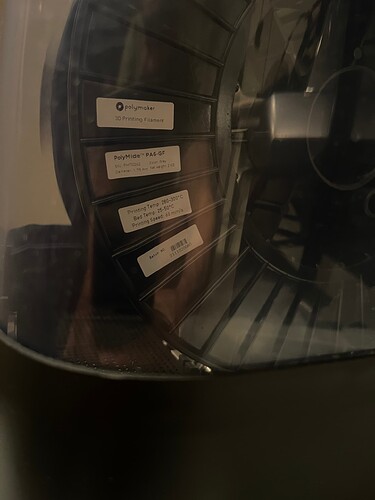
This looks so scary lmao. When is test ride coming?
I’m going to take off the front 3d printed plates and ride the rear 4 this evening.
Won’t really be new. 4 motors same board like always, just all the cans in the rear. Probably will be shitty and I’ll skip belt teeth.
Cam rollers aren’t ideal just yet.
You pretty much have traction control because if you apply too much torque it’ll instantly skip teeth
This specific issue with belts is half the reason why this project is still going after 1 yr plus.
Anyway, second plate order is a go. I am not Tapping any more holes.
I’m not going to try any fancy materials or the anodized TI-CF sandwich of my dreams shown below. Sticking to 7k series aluminums.
Anyone have a better looking 44 redember STL than this lazy photogrammetry attempt?
here is me procrastinating and not doing what I should be doing.
Got a few questions:
-
why do the positions of both motors need to be adjustable? Couldn’t you just have one slidable and the other fixed so there’s points of failure I.e. less probability something will slide and bring the belt out of tension when you don’t mean for it to?
-
I’m sure you’ve explained this somewhere here, so feel free to ignore it if you don’t want to answer again, but why not use gears for this? I’m by no means an expert, so maybe you’ll be able to get it to working perfectly, but I feel like when you’re dealing with pulleys this small it’s going to be hard to avoid skipping in this configuration.
-
If you’re set on avoiding gears, what about chains? In my experience they are pretty good in higher torque situations even if the sprockets involved are smaller. What’s more is maybe (since they are narrower) you could use 2 chains per wheel and just have a single chain/motor.
-
have you run the stress analysis to see how much the 1/8” aluminum will deflect due to the forces associated with the belt? I’m not saying this will definitely be an issue, but in the past I’ve had belt/chain skipping problems which were at least in part caused by the shafts associated with the sprockets/pulleys (or their supporting structures) bending a bit under load resulting in bad tensioning resulting in skipping. Maybe a spring loaded tensioner could help fix issues like this as well as potential stretching of the belt as it wears, but In your position is probably be more inclined to just make things a bit more rigid.
I know I’m being a bit critical - I’m not trying to be an asshole, Im just curious about your design decisions. Lmk if you feel I’m out of line and I’ll tone it down.
That’s some robbery going on with the cost for tapping
Fr, at that rate one could buy all the necessary tools/materials plus some extra taps and cut parts in case some taps beak and still probably pay less…
I woulda done through-holes and used a nut on the other side to save the tapping cost. (coulda woulda shoulda).
Yeah, then you could use nylock nuts too which might save on thread locker. I assumed he did it this way to avoid the tolerance stack created by doing the through hole method (screw-motor plate and screw-clamp), though I’m not sure how that would realy be of benefit. Maybe it’s for ease of assembly?
We’re going double decker, I’ll get a copper riser/ platter with extensions to the exterior. Fight me later.
Figured out a “double decker” solution for the escs.
I’ll get a copper cut plate with appropriate bends to form that grey support and add some extensions on the final design to route outside of board.
I annealed the riser that covers the battery cavity mid deck. Although nylon, it has so much glass and its so stiff that when sanded, it ends up matte. It’s porous enough to easily stain black and seal it. Taulman polyamide flavors didn’t do this for me at all.
The new thinner plates came in.
@Cyanoacrylate
Gears vs belts vs chains: noise is really important to me. I know I get away with riding in places I shouldn’t bc the board is quiet. It will just sit there as coffee table book for show if I used gears.
Deflection 1/8 alu: this kept me up at night. I got wider stabilizing rods and used 3 per plate to estab what on paper is two parallel planes.
Yes, one motor should prob be fixed. I was also designing around the lacroix 430-435 5m htd belts. I want flexibility. Hopefully that doesn’t bite me in the ass.
@Boardnamics I just don’t want to tap anything in my living room watching the news. The motor plate to clamp connection is low on my design concerns. That shit buffs out usually.
Thanks for the critique.
As my workflow for making things leverages digital routes and remote fab services, (the battery cavity riser was made by 3d scanning board, sketch on STL, and then printing with no caliper measurements period.)
I’m realizing that I should have just sat down and fucking learned cad and suffered up front. I would have saved on parts that didn’t fit, man hours tinkering, and silly mistakes.
For the record, I started this shitshow with zero 3d modeling experience, an aversion to 3d printers, and secret anxiety about sending anything thing to sendcutsend to fab. I was also unaware of McMaster-car and Grainger.
damn. that looks awesome. and also like it’s meant to be.
At some point Mike you’ve got to sit back, look at this thing and think, “fuck me, was that necessary?”
Your answer to your own question will define this build.
If he didn’t do this, he’d have to build something even crazier when someone did. In the long run, this is more cost effective.
This is sound logic 10/10
But it’s just so cool…
